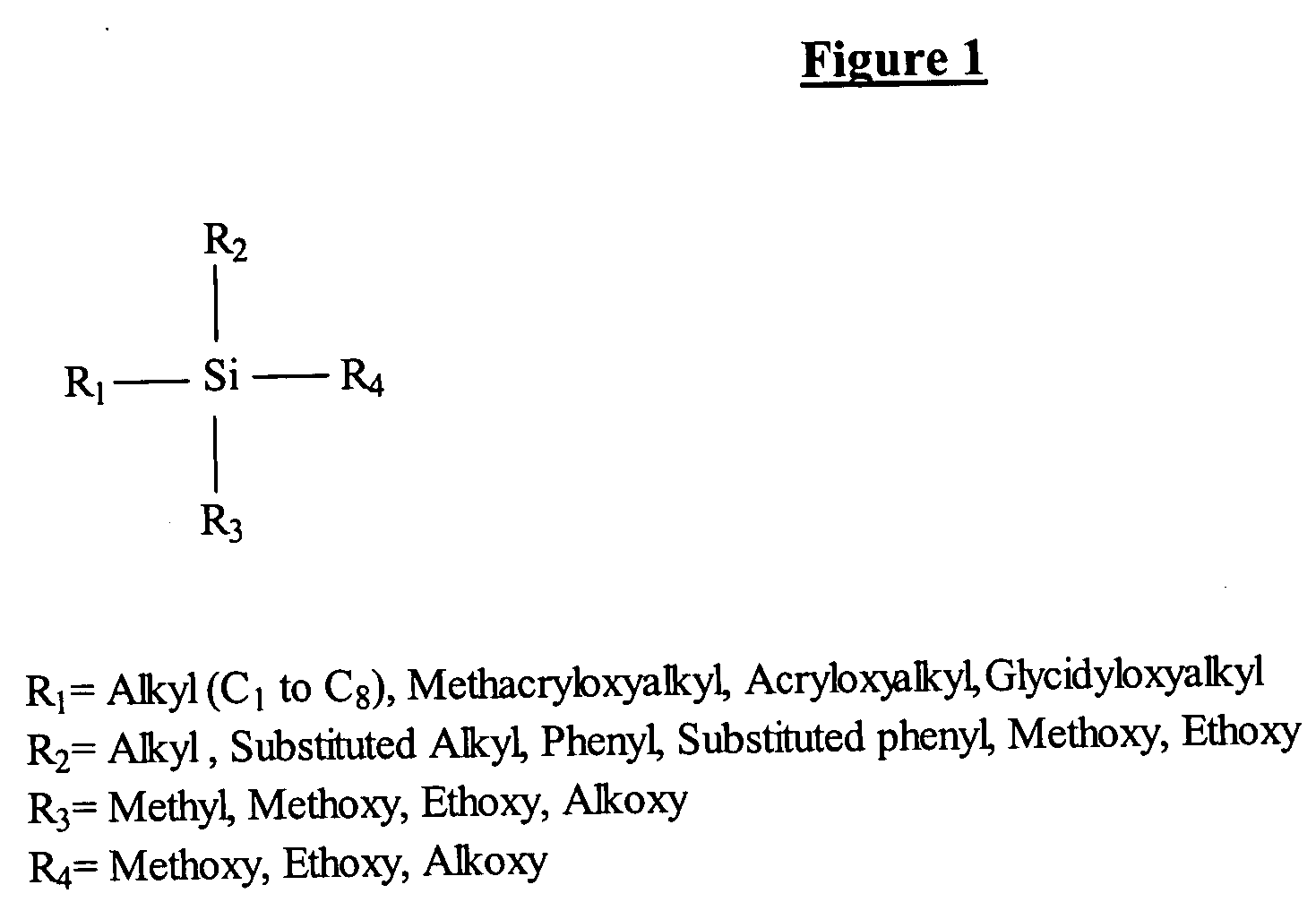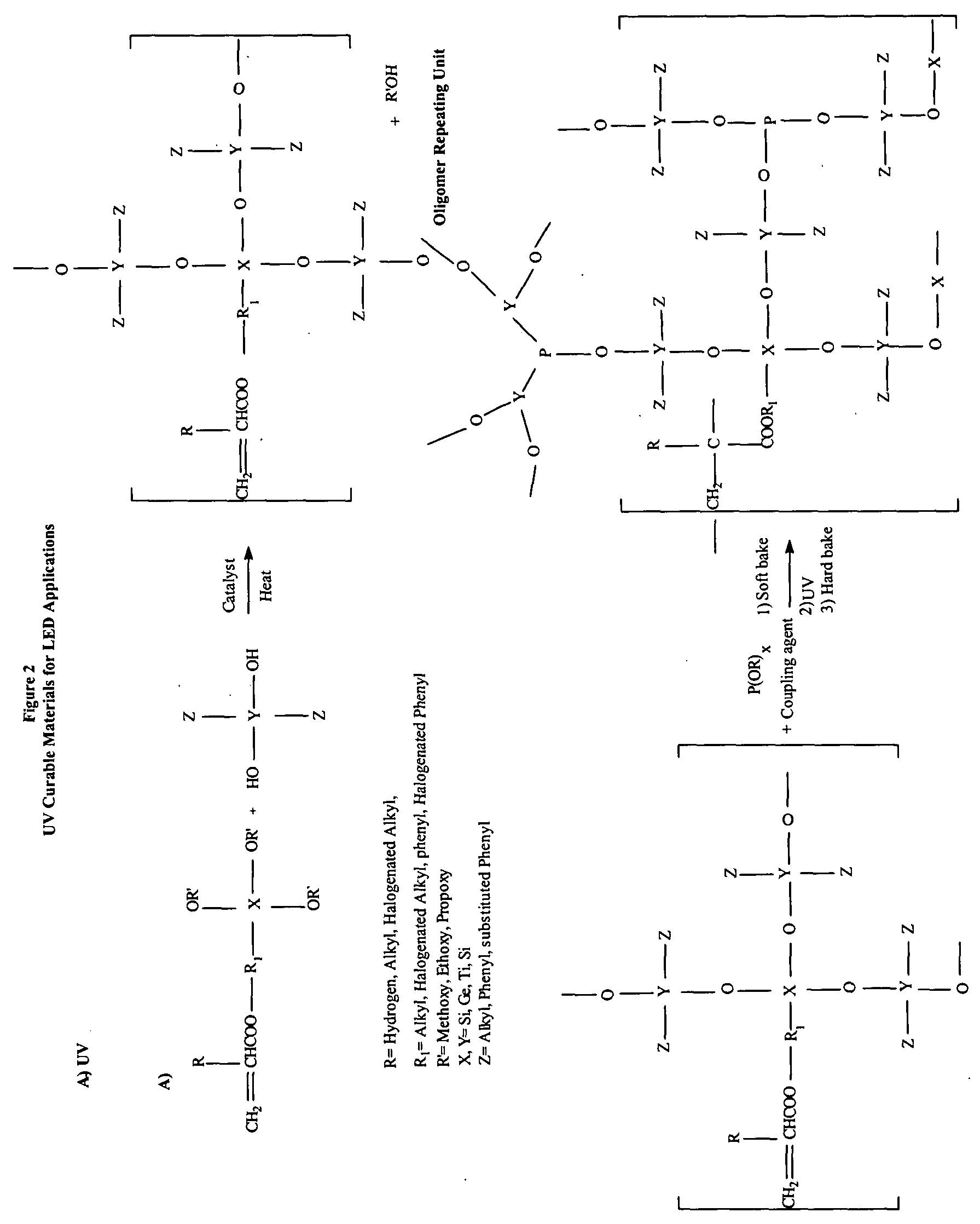High performance sol-gel spin-on glass materials
a spin-on glass, high-performance technology, applied in the direction of photomechanical equipment, instruments, organic chemistry, etc., can solve the problems of insufficient measurement of electrical energy in dollars alone, inability to meet the needs of customers, and poor color rendering, so as to improve the suitability of the material, improve the effect of patterning, and improve the degree of flexibility
- Summary
- Abstract
- Description
- Claims
- Application Information
AI Technical Summary
Benefits of technology
Problems solved by technology
Method used
Image
Examples
examples
[0065] Equivalent moles of an alkoxy silane and of a substituted silane diol were mixed at room temperature, and 1% titanium isopropoxide catalyst was added into the reaction solution while the reaction mixture was being mixed. The temperature of an oil bath enclosing the reaction vessel was adjusted to 115° C.-120° C. while the reaction mixture was purged under nitrogen. The completion of this reaction was monitored by viscosity measurement. The by-product, which is a mixture of alcohols, was then removed under reduced pressure. The viscosity of the material may be lowered to the desired viscosity for different desired film thicknesses or applications using a suitable solvent such as methylethylketone, methanol, or n-propyl acetate.
[0066] The viscosity of the resulting material was measured using a Brookfield™ viscometer with a micro-head attachment and Gel Permeation Chromatography (GPC) was used to measure the molecular weight of the materials, the results of which are tabulated...
PUM
| Property | Measurement | Unit |
|---|---|---|
| temperature | aaaaa | aaaaa |
| temperature | aaaaa | aaaaa |
| temperature | aaaaa | aaaaa |
Abstract
Description
Claims
Application Information
 Login to View More
Login to View More - R&D
- Intellectual Property
- Life Sciences
- Materials
- Tech Scout
- Unparalleled Data Quality
- Higher Quality Content
- 60% Fewer Hallucinations
Browse by: Latest US Patents, China's latest patents, Technical Efficacy Thesaurus, Application Domain, Technology Topic, Popular Technical Reports.
© 2025 PatSnap. All rights reserved.Legal|Privacy policy|Modern Slavery Act Transparency Statement|Sitemap|About US| Contact US: help@patsnap.com



